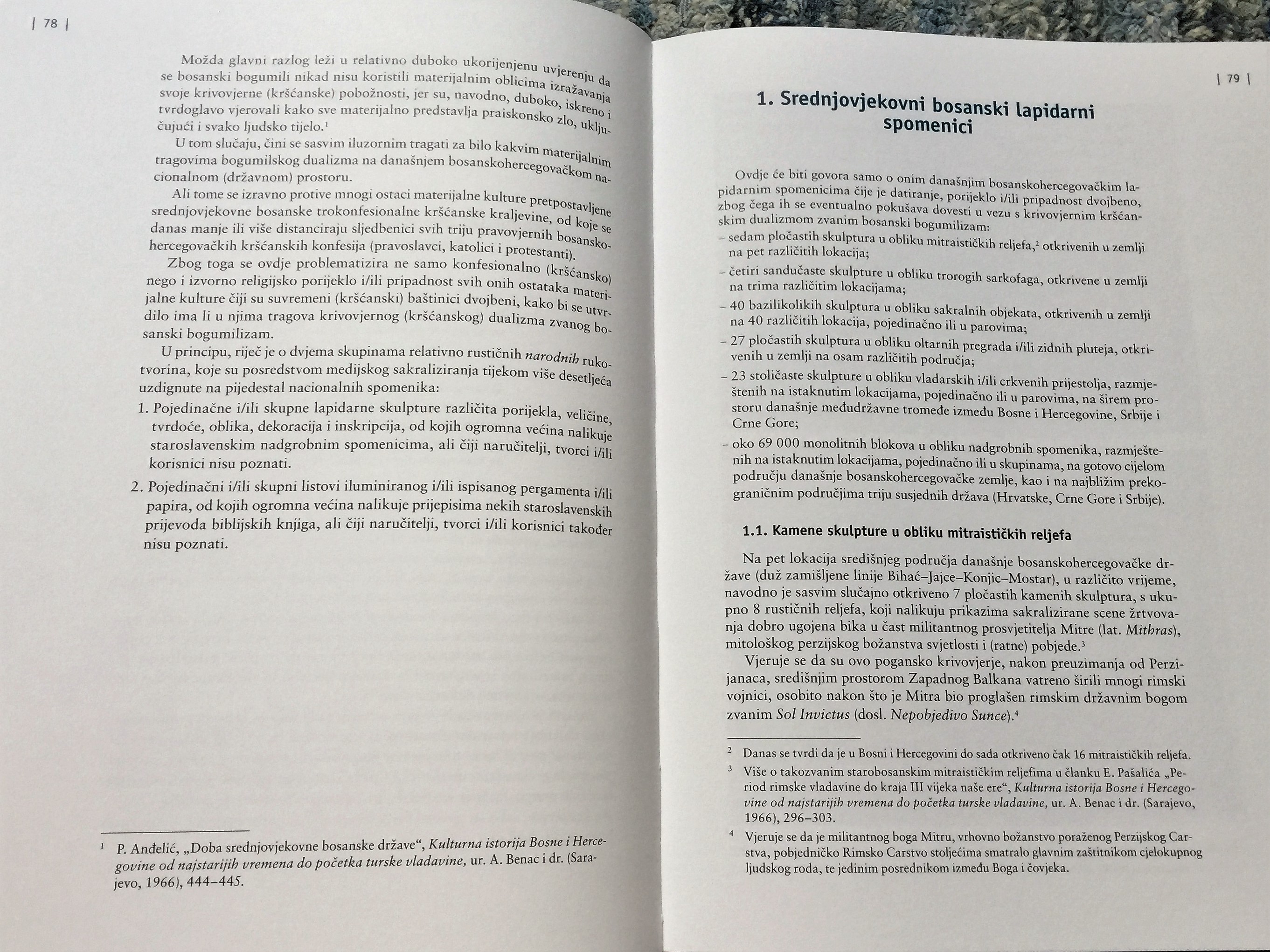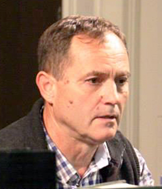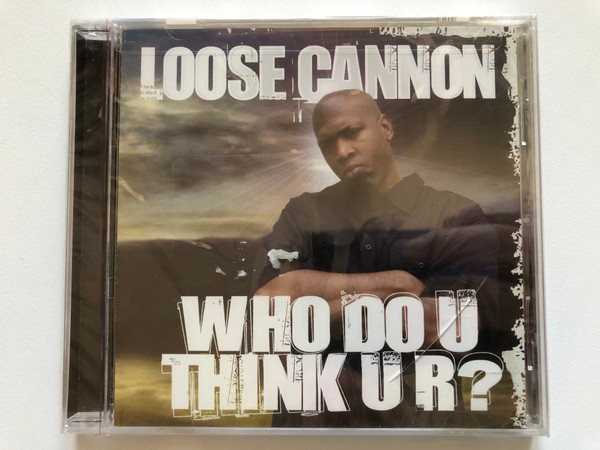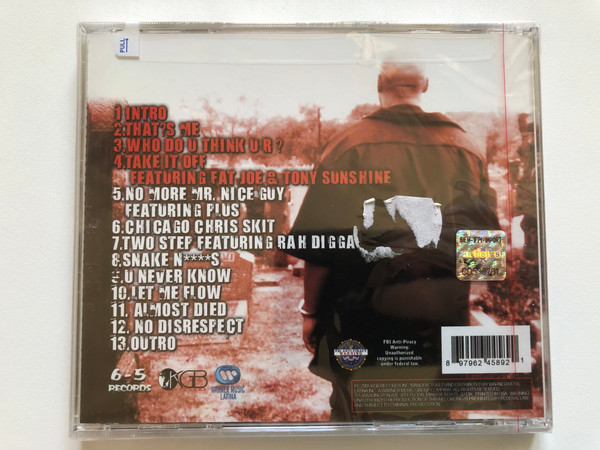Description
Debogumilizacija bosanskog srednjovjekovlja - Redžo Trako
UPC: 9789958010538
Product Features
- Title: Debogumilizacija bosanskog srednjovjekovlja: Uloga bogumilskog dualizma u stvaranju srednjovjekovnog bosanskog identiteta
- Author: Redžo Trako
- Publisher: SYNOPSIS d.o.o., Zagreb & Sarajevo
- Pages: 614
- ISBN: 9789958010538 / 978-9958010538 (Sarajevo); 9789537968649 / 978-9537968649 (Zagreb)
- Publication Year: 2017
- Language: Croatian
Overview (English)
"Debogomilizacija bosanskog srednjovjekovlja" by Redžo Trako is a scholarly work that explores the role of Bogomilism in shaping the identity of medieval Bosnia. This comprehensive study delves into the dualistic beliefs of the Bogomils and their influence on the cultural, social, and religious landscape of Bosnia during the Middle Ages. Trako meticulously examines historical contexts, societal structures, and the interplay between Bogomilism and the emerging Bosnian identity, providing readers with a deep understanding of this pivotal period in Bosnian history.
Overview (Croatian)
"Debogumilizacija bosanskog srednjovjekovlja" Redže Trake je znanstveno djelo koje istražuje ulogu bogumilizma u oblikovanju identiteta srednjovjekovne Bosne. Ova opsežna studija detaljno razmatra dualistička uvjerenja bogumila i njihov utjecaj na kulturni, društveni i vjerski pejzaž Bosne tijekom srednjeg vijeka. Trako pomno ispituje povijesne kontekste, društvene strukture i međusobnu povezanost bogumilizma i nastajućeg bosanskog identiteta, pružajući čitateljima duboko razumijevanje ovog ključnog razdoblja u bosanskoj povijesti.
Interesting Facts (English)
- Scholarly Contribution: This book adds significant value to the understanding of Bosnian medieval history and identity formation.
- Dualism Exploration: It offers an in-depth analysis of Bogomil dualism and its implications on the cultural and religious practices of the time.
- Historical Context: The author contextualizes the Bogomil movement within the broader framework of medieval Europe, highlighting its unique characteristics in the Bosnian setting.
- Publication Details: The book has been published by SYNOPSIS d.o.o., a reputable publisher in the Balkans, known for its academic works.
Interesting Facts (Croatian)
- Znanstveni doprinos: Ova knjiga značajno doprinosi razumijevanju bosanske srednjovjekovne povijesti i oblikovanju identiteta.
- Istraživanje dualizma: Pruža dubinsku analizu bogumilskog dualizma i njegovih implikacija na kulturne i vjerske prakse tog vremena.
- Povijesni kontekst: Autor kontekstualizira bogumilski pokret unutar šireg okvira srednjovjekovne Europe, ističući njegove jedinstvene karakteristike u bosanskom okruženju.
- Podaci o publikaciji: Knjiga je objavljena od strane SYNOPSIS d.o.o., uglednog izdavača na Balkanu, poznatog po svojim akademskim djelima.
Publishers
- SYNOPSIS d.o.o., Zagreb
- Vlade Gotovca 4
- SYNOPSIS d.o.o., Sarajevo
- M. Tita 32
- Visoko evandeosko sveučilište u Osijeku
- Cvejetkova 34, Osijek
Hashtags (English)
#Debogomilizacija #BosnianIdentity #RedžoTrako #Bogomilism #MedievalBosnia #CroatianScholarship #HistoryBook
Hashtags (Croatian)
#Debogumilizacija #BosanskiIdentitet #RedžoTrako #Bogumilizam #SrednjovjekovnaBosna #HrvatskaZnanost #PovijesnaKnjiga


Bogomilism (Bulgarian: Богомилство, Serbo-Croatian: Bogumilstvo/Богумилство) was a Christian neo-Gnostic or dualist sect founded in the First Bulgarian Empire by the priest Bogomil during the reign of Tsar Peter I in the 10th century. It most probably arose in what is today the region of Macedonia[4][5] as a response to the social stratification that occurred with the introduction of feudalism and as a form of political movement and opposition to the Bulgarian state and the church.
The Bogomils called for a return to what they considered to be early spiritual teaching, rejecting the ecclesiastical hierarchy, and their primary political tendencies were resistance to the state and church authorities. This helped the movement spread quickly in the Balkans, gradually expanding throughout the Byzantine Empire and later reaching Kievan Rus', Bosnia (Bosnian Church), Dalmatia, Serbia, Italy, and France (Cathars).
The Bogomils were dualists or Gnostics in that they believed in a world within the body and a world outside the body. They did not use the Christian cross, nor build churches, as they revered their gifted form and considered their body to be the temple. This gave rise to many forms of practice to cleanse oneself through purging, fasting, celebrating and dancing.
ABOUT THE BOOK:
Abstract
The subject of this book is the role of Byzantine-Bulgarian Bogomilism in the creation of a Bosnian identity in the Middle Ages. The Bosnian primary sources never mention Bogomils, and the Bosnian material culture (church architecture, stone monuments and ecclesiastic manuscripts) which I examine does not support the claim that they were made by Bogomils. Thus, if the question is ‘Did medieval Bosnian identity manifest itself through Bogomilism?’ the answer has to be no. Firstly, it is pointed out that medieval Bosnians never identified themselves with Bogomils. And secondly, after careful examination of primary sources and material culture, my argument is that there is no trace of Bogomil influence in medieval Bosnia.
In discounting the concept that Bosnian identity in the Middle Ages was Bogomil in nature, my book contains the introduction, two chapters and conclusion and more than 200 illustrations. In chapter 2, I examine the geo-political development of medieval Bosnia, and I conclude that there is no evidence of Bogomilism. In chapter 3, I look at the remains of about 40 excavated building foundations thought to be churches and find some limited parallels with churches in neighbouring areas and ancient Bosnian monuments, but no trace of Bogomilism. I also examine 22 stone ‘thrones’ and some of the 70,000 standing stones in existence, which as far as I know are unique, but they contain no Bogomil symbolism whatsoever. And finally I examine about 30 ecclesiastical manuscripts written mostly in so-called Bosnian ‘epigraphic Cyrillic’ script. In their illuminations and text I discover that there is great influence from western Catholicism and eastern Orthodoxy in the creation of a kind of specific Bosnian style, but there is no evidence of Bogomilism. The conclusion summarises the evidence of my thesis and asserts that, in regard to thequestion of whether medieval Bosnian identity manifested itself through Bogomilism, the answer is negative.
I am therefore convinced that Bosnian identity was formed during the Middle Ages, not through Bogomilism, but rather as an extension of at least three characteristics of the very nature of Bosnia: firstly, the geography of the place, i.e. the fact that Bosnia is a mountainous area with narrow, isolated valleys; secondly, the history of the place; and thirdly, the fact that Bosnia is on the fault line betweenwestern Catholicism and eastern Orthodoxy, which meant that medieval Bosnian identity was a sort of combination of the two. In other words, in many ways, the formation of a medieval Bosnian identity is almost the same as the formation of any medieval group identity which appears in Europe in the Middle Ages. It is not much different from English, Irish, or Scottish identity. Modern Bosnia-Herzegovina statehood and identity is based on its medieval identity, which later became even more complex because of the Ottoman conquest, and the long presence of a growing Muslim population which gradually made so-called ‘Ottoman Bosnia’ different from neighbouring regions. However, although the history of Bosnia and the experience of Bosnian people were very different from the history and the experience of people in the ‘more orthodox’ eastern and western parts of Europe, there is no evidence of heretical Bogomil dualism.
Sažetak
Ova se knjiga bavi pitanjem srednjovjekovnoga kršćanskog dualističkogkrivovjerja, poznatog u stručnoj i popularnoj literaturi pod nazivom bosanski bogumilizam, te eventualnom mogućnošću njegova dominirajućeg utjecaja na stvaranje srednjovjekovnoga bosanskog identiteta.
Istraživanje se temelji na zanimljivoj činjenici da se, i pored relativno duboko ukorijenjenoga vjerovanja da je krivovjerni bogumilski dualizam bio masovno prihvaćen od miroljubivih, dobroćudnih i slabo obrazovanih srednjovjekovnih bosanskih sljedbenika dvaju južnoslavenskih kršćanskih pravovjerja(srpskoga pravoslavlja i/ili hrvatskoga katolicizma), bogumilsko ime zapravo nikada ne javlja ni u jednom od poznatih primarnih pisanih izvora pretpostavljene srednjovjekovne bosanske provenijencije.
Isto tako, nema ni jednog jedinog traga da su na bilo kojem dijelu današnjega bosanskohercegovačkog nacionalnog (državnog) teritorija ikada bili prihvaćeni, zbrinuti i zaštićeni neki bugarsko-bizantski bogumilski prognanici, koji su zatim, pod najvišim pokroviteljstvom, i uz izdašnu pomoć bosanskih vladara, vrlo brzo uspjeli neizlječivo inficirati preko 10.000 dotadašnjih potpuno pravovjernih kršćana južnoslavenskoga jezika, govora i pisma.
Naposljetku, nema nikakvog neovisnog znanstvenog dokaza da je srednjovjekovna bosanska kraljevina pala u ruke militantnog ali iznimno prosvjetiteljski orijentiranog osmansko-turskog sultana Mehmeda II. El-Fatiha (Osvajača) (1432–1481), zahvaljujući petokolonaškoj izdaji bosanskih bogumila, koji su, nakon višestoljetnog otpora sljedbenicima obaju kršćanskih pravovjerja (srpskoga pravoslavlja i hrvatskoga katolicizma), naposljetku pragmatično (koristoljubivo) odlučili masovno prijeći na islamsku religiju osmansko-turskog okupatora.
Već i zbog toga bi odgovor na polazno istraživačko pitanje (Je li srednjovjekovni bosanski identitet mogao biti temeljen na krivovjernom bogumilskom dualizmu?) mogao biti kategorički niječan.
Ipak, tek nakon dubljeg istraživanja, u knjizi se jasno naglašava da se preci današnjih bosanskohercegovačkih stanovnika nikada nisu identificirali s bogumilskim dualističkim krivovjerjem, kao ni s bilo kakvim drugim kršćanskim krivovjerjem (dualističkim ili nedualističkim), bez obzira na njihovo genetsko ili duhovno porijeklo.
Naposljetku, u knjizi se ističe da na području današnje bosanskohercegovačke države nema tragova postojanja bilo kakvog bogumilskog dualističkog krivovjerja, upravo kao što ih nema ni na najbližim prekograničnim područjima triju susjednih država (Hrvatske, Crne Gore i Srbije).
Zbog svega toga, u knjizi se naglašava potreba potpune debogumilizacije bosanskog srednjovjekovlja.
Umjesto toga, moguće je uočiti barem sedam važnih čimbenika koji doista mogu činiti temelj suvremenoga bosanskohercegovačkog nacionalnog (državotvornog) identiteta:
1. Specifičan prirodni položaj, tj. činjenica da se radi o izrazito šumovitom i gorovitom području samoga središta Zapadnog Balkana.
2. Specifičan geopolitički položaj, tj. činjenica da se radi o području dugotrajnog propagiranja ideje zajedničkoga južnoslavenskog porijekla.
3. Specifičan etnički položaj, tj, činjenica da se pretežno radi o području srpskoga, hrvatskoga i bošnjačkoga etničkog rivaliteta.
4. Specifičan religijski položaj, tj. činjenica da se radi o području istovremenog utjecaja radikalnih sljedbenika triju monoteističkih abrahamskih religija (kršćanstva, islama i judaizma).
5. Specifičan konfesionalni (kršćanski) položaj, tj. činjenica da se radi o području izraženog pravoslavnog i rimokatoličkog rivaliteta.
6. Specifičan kulturološki položaj, tj. činjenica da se radi o području snažnog utjecaja istočnoeuropske i zapadnoeuropske kulture.
7. Specifičan lingvistički položaj, tj. činjenica da se radi o središnjem području dodira ekavskog, (i)jekavskog i ikavskoga govora štokavskog dijalekta više susjednih južnoslavenskih jezika.
U skladu s tim, treba prihvatiti činjenicu da će istraživanje takozvanog srednjovjekovnog bosanskog nacionalnog identiteta uvijek biti prirodno opterećeno različitim stajalištima bližih i daljih prekograničnih susjeda.
A upravo se zbog toga bosanskohercegovački Srbi, Hrvati i Bošnjaci malo ali ipak znakovito razlikuju od svih drugih Srba, Hrvata i Bošnjaka na Balkanu, Europi i Svijetu; bosanskohercegovački kršćani, muslimani i židovi od svih drugih kršćana, muslimana i židova; bosanskohercegovački pravoslavci, katolici i protestanti od svih drugih pravoslavaca, katolika i protestanata i, naposljetku, bosanskohercegovačka verzija hrvatskog, srpskog i bosanskog jezika od bilo koje druge verzije hrvatskog, srpskog i bosanskog jezika.
Prema tome, kako nema nikakva ozbiljnog znanstvenog razloga za vjerovanje kako se srednjovjekovna bosanska država po bilo čemu bitno razlikovala od ostalih srednjovjekovnih europskih država, također nema razloga za vjerovanje da se stvaranje suvremenoga bosanskohercegovačkoga nacionalnog identiteta na bilo koji način bitno razlikuje od stvaranja nacionalnih identiteta bilo koje druge europske države.
Drugim riječima, povijesnu priču o začetku, rađanju, rastu, razvoju, zlatnom dobu, opadanju, starenju, smrti i konačnom nestanku srednjovjekovne bosanske trokonfesionalne kršćanske kraljevine treba što prije smjestiti tamo gdje joj je oduvijek bilo mjesto – u područje izmišljene južnoslavenske (pretežno kršćanske) mitologije.
Biography:
Redžo Trako was born on October 20, 1958 in Preočica, a mountainous village at the heart of former Yugoslav Republic of Bosnia and Herzegovina. He is married to Ranka and they have two daughters - Tijana and Tihana.
After completing elementary school in Central Bosnia he spent 11 years in the military schools, includinga Military Gymnasium in Belgrade (Serbia) and a Technical Military Academy in Zagreb (Croatia). He graduated as a Military Engineer of Chemical Technology and went on to do a postgraduate degree in Military Pyrotechnics. He worked as a logistics officer in former Yugoslav People's Army, stationed in Banja Luka (Bosnian-Herzegovina), until the war breakup of ex-Yugoslavia (1991-1995).
After voluntarily refusing to participate in what became a classic interethnic conflict, he was arrested, separated from his family and inprisoned in Serbia for about seven months, and then forced to flee his home in Banja Luka with his family, leaving everything behind. They survived the war being regarded as refugees in Croatia and had to rebuild their lives completely from scratch.
Being impossible to get a permanent job the whole family moved to Northern Ireland (United Kingdom), where he and his wife and children continued their education.
After a short study at the Belfast Bible College (1998-1999) he went on to do his doctorate at the Queen’s University of Belfast,where he obtained his PhD in 2007 from the Institute of Byzantine Studies by defending the thesis titled The Role of Bogomilism in the Creation of Bosnian Identity in the Middle Ages. Based on his doctorate he published a representative book Debogomization of the Bosnian Middle Ages in 2017.
At the same time he initiated the founding of the Christian missionary organization Church Growth Croatia and Bosnia (renamed Friends of Bosnia and Croatia and Northern Ireland), with the main vision to provide the first translation of the whole Bible into Bosnian, the official language of his own Bosniak people who are almost all the followers of Islam.
One of the main ideas behind this project was to allow Bosniak Muslims to fully participate in the ongoing interfaith dialoguesand reconciliation processes with their Christian (Serb Orthodox and Croat Catholic) neighbours on equal grounds.
The uniqueness of this project lies in the fact that all the translators of the sacred scriptures of Jews and Christians were exclusively leading Bosniak Muslim scholars. The project was conducted in cooperation with Wycliffe Bible Translators and lasted for 12 years resulting in the publishing of the so-called Bosnian Bible in 2013.
Dr Trako is now an independent scholar based in a small Croatian town of Daruvar, near the capital Zagreb. He is a memmber of the local Baptist Church, together with his family, and he is currently a registered worker of the Baptist Union of Croatia and a lecturer at the Evangelical Theological Seminary in Osijek (Croatia).
He teaches courses in four highly topical subjects – Church history, Medieval Bosnian Church, Introduction to Islam and Christian-Muslim relations in the central area of the Western Balkans.
At the same time he is running two interesting international interreligious projects - the first translation of a representative commentary to the entire Bible into the Bosnian language (New Bible Commentary, IVP), again in close collaboration with Bosniak Muslim scholars from Sarajevo, and founding of the fist Institute for the Study of Islam at a Christian college in Balkans (Evangelical Theological Seminary in Osijek).
Finally, in March 2017 he was accepted as a full member of the European Academy of Sciences and Arts in Salzburg (Austria).

Dr. sc. Redžo Trako (1958) bošnjački je slobodni znanstvenik rodom iz Preočice kod Viteza, multietničkog gradića u samom središtu današnje Bosne i Hercegovine. Živi u sličnom slavonskom gradiću Daruvaru. Oženjen je Rankom, s kojom ima dvije kćeri – Tijanu i Tihanu.
Nakon osnovne škole obrazuje se u Vojnoj gimnaziji u Beogradu i Tehničkoj vojnoj akademiji u Zagrebu, a zatim godinama radi u Bosni i Hercegovini kao diplomirani vojni inženjer JNA. Nakon odbijanja da sudjeluje u međuetničkom ratnom sukobu 1992, s obitelji, u statusu izbjeglice, seli u Daruvar (Republika Hrvatska).
U nemogućnosti dobivanja stalnog posla, odlazi u Sjevernu Irsku i nastavlja školovanje na Belfast Bible College i Queen's University of Belfast, gdje doktorira 2007. godine.
Istovremeno sudjeluje u osnivanju međunarodne organizacije Friends of Bosnia and Croatia in Northern Ireland, uz čiju pomoć inicira i vodi projekt prvog cjelovitog prijevoda Biblije na bosanski jezik, kao i prijevoda reprezentativnog biblijskog komentara (New Bible Commentary, IVP).
Trenutno predaje na Visokom evanđeoskom teološkom učilištu u Osijeku, gdje paralelno radi na osnivanju Instituta za izučavanje islama.
Sudionik je više međunarodnih konferencija o ulozi religije u društvu, član uredništva znanstvenog časopisa Journal of Culture and Religion, kao i redovni član Europske akademije znanosti i umjetnosti u Salzburgu (Austrija), VII. razred (svjetske religije).






















































